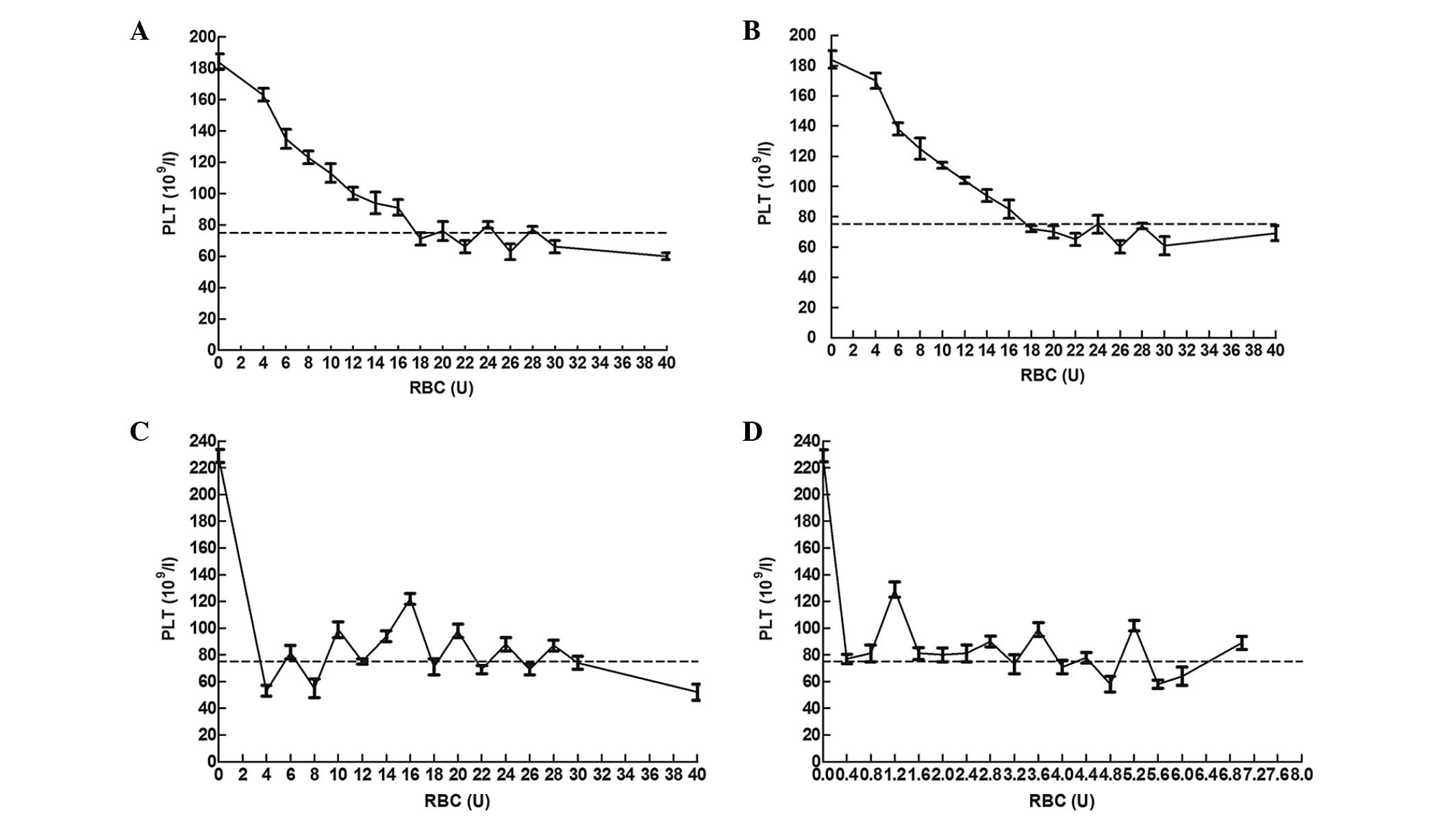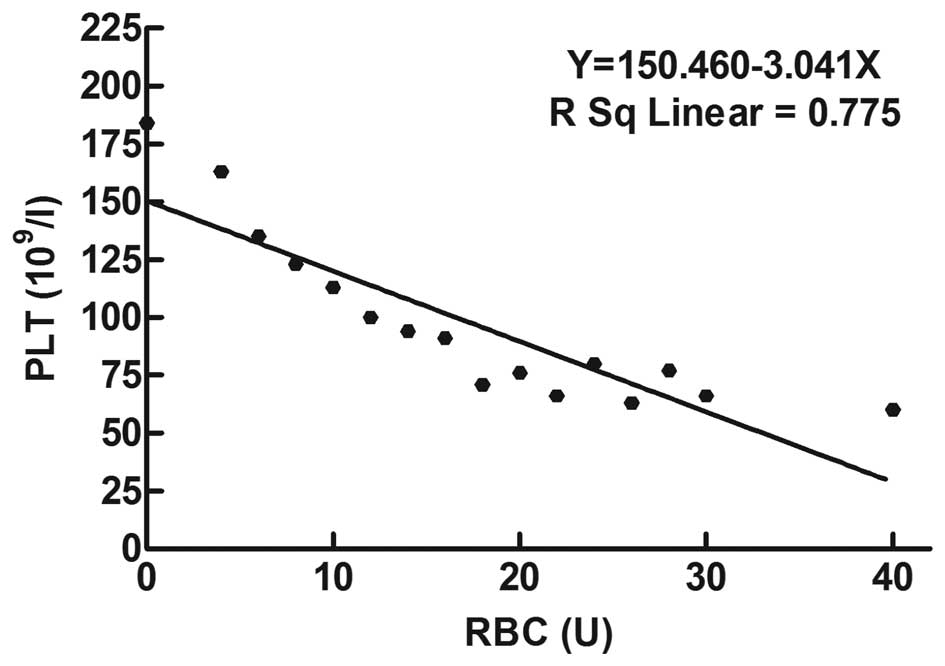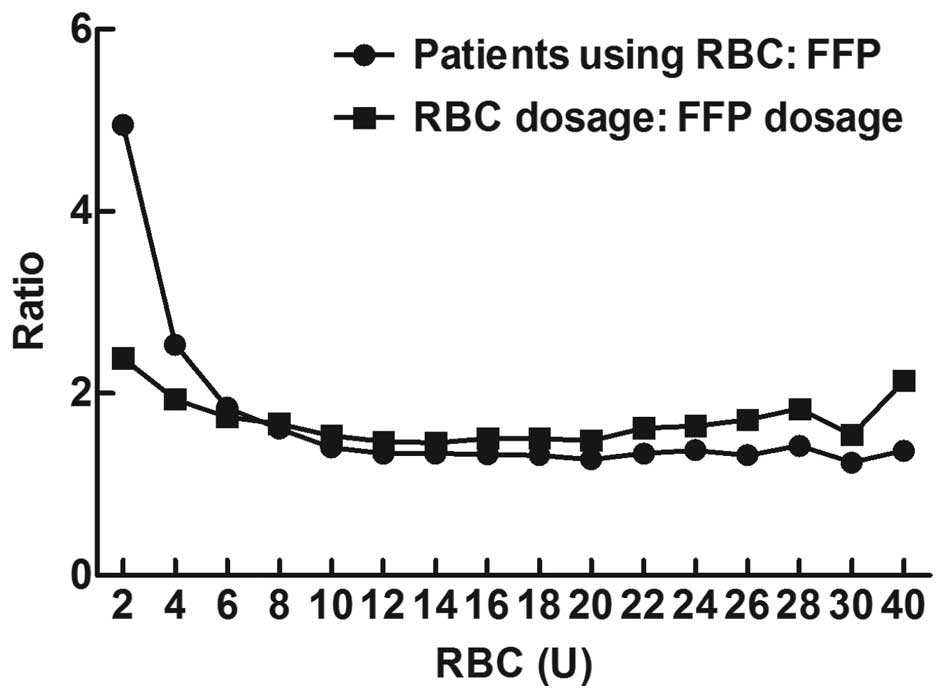|
1
|
Malone DL, Hess JR and Fingerhut A:
Massive transfusion practices around the globe and a suggestion for
a common massive transfusion protocol. J Trauma. 60(6 Suppl):
S91–S96. 2006. View Article : Google Scholar : PubMed/NCBI
|
|
2
|
Schuster KM, Davis KA, Lui FY, Maerz LL
and Kaplan LJ: The status of massive transfusion protocols in
United States trauma centers: Massive transfusion or massive
confusion? Transfusion. 50:1545–1551. 2010. View Article : Google Scholar : PubMed/NCBI
|
|
3
|
Stainsby D, MacLennan S, Thomas D, Isaac J
and Hamilton PJ: British Committee for Standards in Haematology:
Guidelines on the management of massive blood loss. Br J Haematol.
135:634–641. 2006. View Article : Google Scholar : PubMed/NCBI
|
|
4
|
Hewitt PE and Machin SJ: ABC of
transfusion. Massive blood transfusion. BMJ. 300:107–109. 1990.
View Article : Google Scholar : PubMed/NCBI
|
|
5
|
Kozek-Langenecker S: Management of massive
operative blood loss. Minerva Anestesiol. 73:401–415.
2007.PubMed/NCBI
|
|
6
|
Zink KA, Sambasivan CN, Holcomb JB,
Chisholm G and Schreiber MA: A high ratio of plasma and platelets
to packed red blood cells in the first 6 hours of massive
transfusion improves outcomes in a large multicenter study. Am J
Surg. 197:565–570; discussion 570. 2009. View Article : Google Scholar : PubMed/NCBI
|
|
7
|
Ho AM, Dion PW, Yeung JH, Ng CS, Karmakar
MK, Critchley LA, Rainer TH, Cheung CW and Tay BA: Fresh-frozen
plasma transfusion strategy in trauma with massive and ongoing
bleeding. Common (sense) and sensibility. Resuscitation.
81:1079–1081. 2010. View Article : Google Scholar : PubMed/NCBI
|
|
8
|
Borgman MA, Spinella PC, Perkins JG,
Grathwohl KW, Repine T, Beekley AC, Sebesta J, Jenkins D, Wade CE
and Holcomb JB: The ratio of blood products transfused affects
mortality in patients receiving massive transfusions at a combat
support hospital. J Trauma. 63:805–813. 2007. View Article : Google Scholar : PubMed/NCBI
|
|
9
|
Yuan S, Ferrell C and Chandler WL:
Comparing the prothrombin time INR versus the APTT to evaluate the
coagulopathy of acute trauma. Thromb Res. 120:29–37. 2007.
View Article : Google Scholar
|
|
10
|
Miller RD: Massive blood transfusions: The
impact of Vietnam military data on modern civilian transfusion
medicine. Anesthesiology. 110:1412–1416. 2009. View Article : Google Scholar : PubMed/NCBI
|
|
11
|
Stainsby D, MacLennan S and Hamilton PJ:
Management of massive blood loss: A template guideline. Br J
Anaesth. 85:487–491. 2000. View Article : Google Scholar : PubMed/NCBI
|
|
12
|
Samama CM, Djoudi R, Lecompte T, Nathan N
and Schved JF; French Health Products Safety Agency (AFSSAPS)
Expert Group: Perioperative platelet transfusion. Recommendations
of the French Health Products Safety Agency (AFSSAPS) 2003. Minerva
Anestesiol. 72:447–452. 2006.PubMed/NCBI
|
|
13
|
American Society of Anesthesiologists Task
Force on Perioperative Blood Transfusion and Adjuvant Therapies:
Practice guidelines for perioperative blood transfusion and
adjuvant therapies: An updated report by the American Society of
Anesthesiologists Task Force on Perioperative Blood Transfusion and
Adjuvant Therapies. Anesthesiology. 105:198–208. 2006. View Article : Google Scholar : PubMed/NCBI
|
|
14
|
Liumbruno G, Bennardello F, Lattanzio A,
Piccoli P and Rossetti G; Italian Society of Transfusion Medicine
Immunohaematology (SIMTI) Work Group: Recommendations for the
transfusion of plasma and platelets. Blood Transfus. 7:132–150.
2009.PubMed/NCBI
|
|
15
|
Kor DJ, Stubbs JR and Gajic O:
Perioperative coagulation management - fresh frozen plasma. Best
Pract Res Clin Anaesthesiol. 24:51–64. 2010. View Article : Google Scholar : PubMed/NCBI
|
|
16
|
Cinat ME, Wallace WC, Nastanski F, West J,
Sloan S, Ocariz J and Wilson SE: Improved survival following
massive transfusion in patients who have undergone trauma. Arch
Surg. 134:964–968; discussion 968–970. 1999. View Article : Google Scholar : PubMed/NCBI
|
|
17
|
Riskin DJ, Tsai TC, Riskin L,
Hernandez-Boussard T, Purtill M, Maggio PM, Spain DA and Brundage
SI: Massive transfusion protocols: The role of aggressive
resuscitation versus product ratio in mortality reduction. J Am
Coll Surg. 209:198–205. 2009. View Article : Google Scholar : PubMed/NCBI
|
|
18
|
Como JJ, Dutton RP, Scalea TM, Edelman BB
and Hess JR: Blood transfusion rates in the care of acute trauma.
Transfusion. 44:809–813. 2004. View Article : Google Scholar : PubMed/NCBI
|
|
19
|
Miller RD, Robbins TO, Tong MJ and Barton
SL: Coagulation defects associated with massive blood transfusions.
Ann Surg. 174:794–801. 1971. View Article : Google Scholar : PubMed/NCBI
|
|
20
|
Counts RB, Haisch C, Simon TL, Maxwell NG,
Heimbach DM and Carrico CJ: Hemostasis in massively transfused
trauma patients. Ann Surg. 190:91–99. 1979. View Article : Google Scholar : PubMed/NCBI
|
|
21
|
Hardy JF, De Moerloose P and Samama M;
Groupe d'intérêt en Hémostase Périopératoire: Massive transfusion
and coagulopathy: Pathophysiology and implications for clinical
management. Can J Anaesth. 51:293–310. 2004. View Article : Google Scholar : PubMed/NCBI
|
|
22
|
Stansbury LG, Dutton RP, Stein DM,
Bochicchio GV, Scalea TM and Hess JR: Controversy in trauma
resuscitation: Do ratios of plasma to red blood cells matter?
Transfus Med Rev. 23:255–265. 2009. View Article : Google Scholar : PubMed/NCBI
|
|
23
|
Peiniger S, Nienaber U, Lefering R, Braun
M, Wafaisade A, Wutzler S, Borgmann M, Spinella PC and Maegele M:
Trauma Registry of the Deutsche Gesellschaft für Unfallchirurgie:
Balanced massive transfusion ratios in multiple injury patients
with traumatic brain injury. Crit Care. 15:R682011. View Article : Google Scholar
|
|
24
|
Murad MH, Stubbs JR, Gandhi MJ, Wang AT,
Paul A, Erwin PJ, Montori VM and Roback JD: The effect of plasma
transfusion on morbidity and mortality: A systematic review and
meta-analysis. Transfusion. 50:1370–1383. 2010. View Article : Google Scholar : PubMed/NCBI
|
|
25
|
Brohi K, Singh J, Heron M and Coats T:
Acute traumatic coagulopathy. J Trauma. 54:1127–1130. 2003.
View Article : Google Scholar : PubMed/NCBI
|
|
26
|
Ciavarella D, Reed RL, Counts RB, Baron L,
Pavlin E, Heimbach DM and Carrico CJ: Clotting factor levels and
the risk of diffuse microvascular bleeding in the massively
transfused patient. Br J Haematol. 67:365–368. 1987. View Article : Google Scholar : PubMed/NCBI
|














